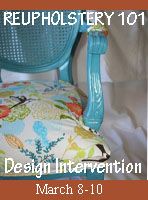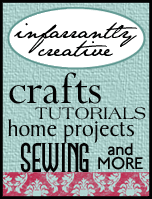I have been working like crazy around here! I’ve been trying to finish up customer’s orders so that they can have them before Handsome Hubby gets home. I’ve been working on our bedroom, finishing up Cameron’s bedroom, trying to get this house in order, and realizing I definitely need to go grocery shopping before Handsome Hubby comes home!! One week - - -eeeeaaaaakkkkk!!! We are sooo excited!
Are you sick of hearing about that?
Sorry - - you may just not want to visit my blog for a couple of weeks if you don’t want to hear about Handsome Hubby and our excitement!!
Anyway, as I have been working on all these projects this week, I learned a few new things that I wanted to share with you and I thought I would introduce you to one of my tools that help make the job easier!
Now, my first tip may not come as any huge surprise to you, you probably already do it, but I just realized it this week - - (I have been sewing for 10+ years and never thought of this!)
TIP #1
When you are making cording and attaching it to the first surface (not your final attachment) change your stitch length to the longest possible stitch.
By doing this, you can make your cording in half the time and attach it to your first layer in half the time!
Just remember to put your stitch length back to the proper length before you put your final piece together!
TIP #2
Did you know there are different weights of drop cloths?
I totally did not know that until this week! I stopped by Lowes quickly this week to pick up another drop cloth - - not for painting of course - - but I grabbed from the top shelf instead of the bottom shelf this time and didn’t know until I got home that there were different weights - - and a big difference between the two! I picked up a heavier weight one and it was so hard to work with! I always wash and dry my drop cloths before I work with them and even after washing it twice it was still incredibly hard to work with!
I would say that the heavier weight would work fantastic for a re-upholstery project, but it is definitely too heavy to be sewing with - - it does not hang or drape well.
So, my tip - - - check the weight of your drop cloth before you buy!!
By the way - - do you think the drop cloth manufacturers are wondering what the heck is going on since they have seen sales double since the blogging world decided that drop cloths are the answer to all decorating dilemmas?
AND NOW FOR MY HELPFUL TOOL:
Have you seen these? Do you have one? It is a bias tape maker (ok, that may not be the technical name for it, but it should be if it isn’t!) I use mine all the time. It is a simple little tool that you pull your fabric through, ironing it as you pull it through, and when you are finished, you have perfect bias tape that matches your project perfectly!!
Here’s how it works:
1. Cut your fabric in 2” strips
2. Take a piece of tape (I usually use scotch tape, but I used electrical tape so you could see it - - and because that was what I had on hand!) and attach it to the end of your strip making a 1”-2” tag.
3. Slide your tag end into the wide end of the tool
4. Using a straight pin, pull the tape tag through the end of the tool (the tape tends to be a bit stiffer than just the fabric and therefore it is easier to push/pull through than just trying to make the fabric go through)
5. Once your fabric is through, hold the little handle (this is so that your don’t burn your hand as you start ironing)
6. Iron along the folded edges, pulling the fabric through as you move your iron along.
7. Keep pulling until you have pulled and ironed all your fabric through the bias tape maker.
Tahdah!! You have made your own bias tape!
Now, all you have to do is attach your tape to your project. Just make a little sandwich, with one half of your tape under your project, then folding the other half around to the top, you can sew right along the edge of the tape attaching all the layers as you go!!
Wasn’t that fun?
Now, if you are still looking for some more fun today, Head on over to the CSI Project - - they are having a furniture re-do link up today! I’m linking up some of my projects today - - jump over there and get some inspiration from all the projects!!





















































































